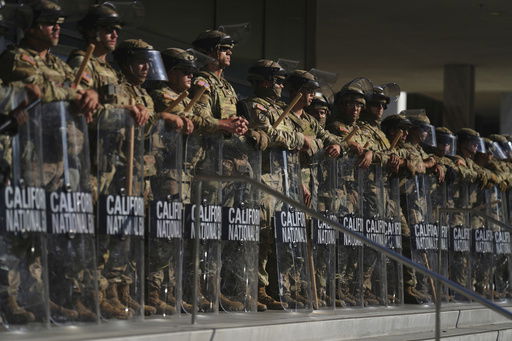The Pentagon has announced a significant drawdown of National Guard troops from Los Angeles, leaving a contingent of 250 personnel behind, signaling a shift in the federal response to local unrest.
These troops were initially deployed to the city in response to protests stemming from the Trump administration’s contentious immigration crackdown, a move that sparked considerable debate and opposition from state and local authorities.
Defense Secretary Pete Hegseth authorized the immediate departure of 1,350 National Guard members this week, with the remaining force tasked with safeguarding federal properties and personnel, according to Sean Parnell, the chief Pentagon spokesperson.
The presence of thousands of National Guard soldiers and Marines in Los Angeles since early June was met with strong objections from California officials, who argued the deployment inflamed tensions rather than de-escalated them. Mayor Karen Bass hailed the latest withdrawal as “another win for Los Angeles,” highlighting the local desire for federal forces to depart.
A notable incident during their deployment involved National Guard troops accompanying federal authorities in a July 7 operation within a predominantly immigrant neighborhood, which concluded unexpectedly, further fueling community concerns and public discourse around federal intervention.
Despite the large-scale deployment, a vast majority of the National Guard members were stationed at the Joint Forces Training Base in Los Alamitos, with limited visible presence in Los Angeles itself. This contrasts with the largely scattered and smaller impromptu protests related to immigration arrests that have characterized recent weeks.
Governor Gavin Newsom previously escalated the dispute by suing the federal government in June, contending that the activation of troops without his notification violated state law. Newsom also sought an emergency injunction to prevent the troops from participating in immigration raids, underscoring the legal battle over federal authority.
While a lower court initially ruled in favor of California, ordering the return of control over the Guard to the state, the Ninth U.S. Circuit Court of Appeals subsequently reversed this decision, highlighting the complex legal landscape surrounding federal deployments during civil unrest.
The ongoing adjustments to the federal military presence in Los Angeles reflect a contentious period of federal-state relations and community advocacy, underscoring the persistent tension between national security directives and local governance in managing public demonstrations and immigration enforcement.






Leave a Reply